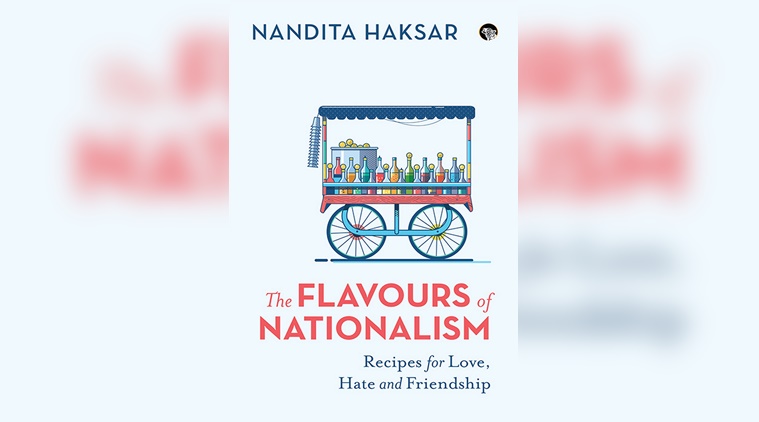I Remember the Taste
A delectable memoir that contextualises Indian food and navigates its culinary nuances effectively

The Flavours of Nationalism: Recipes for Love, Hate and Friendship by Nandita Haksar Speaking Tiger Publishing Pvt Ltd 248 pages Rs 350
There is something delightfully evocative about the title and the subtitle of this under review. In one fell swoop, The Flavours of Nationalism: Recipes for Love, Hate and Friendship, conveys what food has always been about — politics, socialisation, bonhomie and prejudices. Such associations, though fairly obvious, remain nascent territory in academic studies on food in India. Popular writing on food is preoccupied with celebrating the flavours and tastes. There is much nostalgia, without self-reflection, an occasional doffing of the hat to sustainability issues without going the whole hog on ecological concerns, a passing concern for our embattled food choices without acknowledging the politics over what to eat and who we should dine with.
A food memoir is perhaps the best vehicle for the purpose — understanding the place of food in our lives through stories and anecdotes peopled with relatives, friends, comrades and colleagues. With a light touch, Nandita Haksar conveys that oft-used, but not often fully understood academic adage, “the personal is the political”.
Flavours of Nationalism is empathetic, yet critical, it’s celebratory but also self-reflective. “Amma, my mother, gave me first lessons in eating etiquette: Never eat with my left hand, while eating make sure no more than the tip of fingers are used to make a luqma (a mouthful) and then put it into the mouth with the aid of the thumb…Under no circumstance should the palm have food in it… Amma did not realise that much of this etiquette was based on caste rules of purity and pollution. So, even though we did break many caste rules and taboos, the teaching did go a long way to making me a cultural Brahmin, if not a religious one. But all this I discovered, much later”.
At another place, she writes of having imbibed her Kashmiri Pandit tradition of not tasting food while cooking. According to her community, this is considered jhoota. “That is how I unknowingly imbibed Brahmanism in my being. Even today, when I watch celebrity cooks on TV tasting their dishes as they cook, I find myself cringing”.
Born into a family whose ancestors from Kashmir settled in the plains of north India in the early 20th century, Haksar writes she “never personally felt Kashmiri. If I was asked, where I came from, I would say, I was from Old Delhi. The Haksars had homes in the Walled City and had lived there for several generations. It was for this reason, that I called myself a downstairs Kashmiri to distinguish myself from the real Kashmiri-speaking Kashmiris from the Valley”.
The migration influenced food habits as well. The Kashmiri Pandits in the plains had integrated aspects of the cuisines of the areas they settled in. “The Kashmiris of the plains eat meat but we also consume vegetables, paneer and a variety of dals. That is perhaps one of the significant differences between the downstairs Kashmiris and the Kashmiris who live in the Kashmir Valley”. But there were also lip-smacking similarities in the two cuisines including the liberal use of ghee or mustard oil. Haksar writes that each ingredient was deep-fried separately. “So, for instance, if we make aloo-bhindi dum, the ladies fingers are first deep fried and kept aside, then the potatoes are deep-fried and then the two are cooked together. The result is absolutely delicious.”
Excursions such as these make Haksar’s deeply-political foray touch a chord with the gourmand. She liberally sprinkles her account with recipes to evoke the memory of relatives or meals shared with friends. A mediation on the differences between the food of the Kashmiris in the Valley and those of downstream Kashmiris is followed by the recipe of the “famous raan, cooked the Kashmiri Pandit way,” with instructions as meticulous as, “Spread the masala and continue stabbing the meat for a total of about 40 minutes”.
But at the heart of Flavours of Nationalism is a foodie’s dream that all “Indian citizens will learn to sit at the national table, that no one will go hungry and we will all eat together with dignity and equality, celebrating our diversity.” Haksar is, at times, patient with the taboos imposed by conservative family friends, without approving of their actions, but she minces no words when her comrades disappoint her. “One of my guests was Jogen Sengupta, Naxalite from Bengal… He looked at the tray and said with stern authority, ‘Comrade Nandita, this is bourgeois tea. You must learn to make proletarian tea. Of course, I knew working class people drank sweet, strong, milky tea… In that moment of humiliation, I suddenly felt anger that Comrade Jogen had neither offered to help me carry the tray nor help make the tea. It was my first feminist flash of anger.”
And in dismissing the kheer cooked by Haksar as, “not like the one my mother cooks for me,” the Naxalite typifies the deeply entrenched patriarchy, which decades ago, had led Haksar’s grandmother to complain that her husband was “never happy with anything I did”. But there are also heart-warming stories. On her wedding day, her Naga husband’s sister took care to cook a special meal of chicken, fish and vegetables for the guests who would have had problems with pork and beef. And, then the foodie invents recipes which she describes as “Indo-Naga”. A small grouse. Flavours of Nationalism has only one such recipe. Do try the Smoked Brinjal with Fermented Fish.






















No hay comentarios:
Publicar un comentario